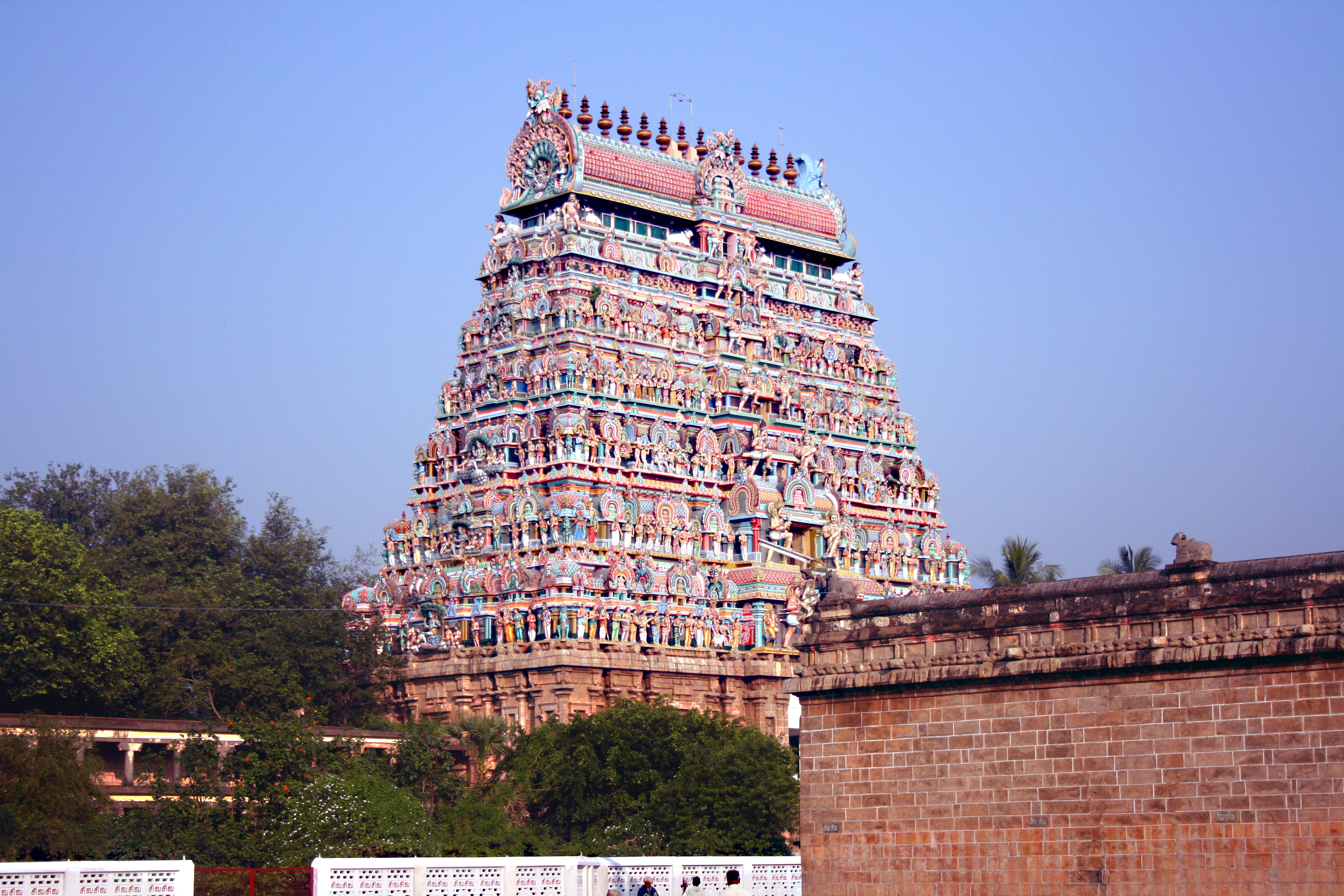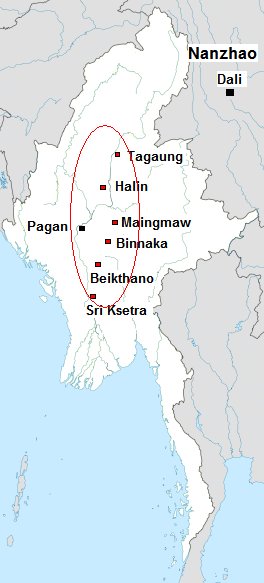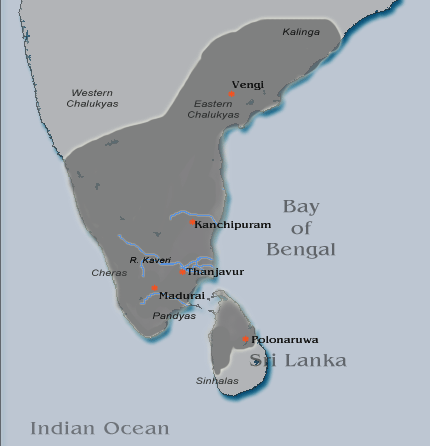|
Kulottunga Chola I
Kulottunga I (;1025 CE - 1122 CE) also spelt Kulothunga (), was a Chola Emperor who reigned from 1070 CE to 1122 CE succeeding his cousin Athirajendra Chola. He also served as the Eastern Chalukya king from 1061 CE to 1118 CE, succeeding his father Rajaraja Narendra. His birth name was Rajendra. He is related to the Chola dynasty through his mother's side and the Eastern Chalukyas through his father's side. His mother, Ammangaidevi, was a Chola princess and the daughter of emperor Rajendra I. His father was king Rajaraja Narendra of the Eastern Chalukya dynasty who was the nephew of Rajendra I and maternal grandson of Rajaraja I. According to historian Sailendra Nath Sen, his accession marked the beginning of a new era and ushered in a period of internal peace and benevolent administration. Kulottunga had diplomatic relations with the north Indian city Kanauj and also with distant countries like Cambodia, Srivijaya, Khmer, Pagan (Burma) and China. He established Chola overlo ... [...More Info...] [...Related Items...] OR: [Wikipedia] [Google] [Baidu] |
Nataraja Temple, Chidambaram
Thillai Nataraja Temple, also referred as the Chidambaram Nataraja Temple, is a Hindu temple dedicated to Nataraja, the form of Shiva as the lord of dance. This temple is located in Chidambaram, Tamil Nadu, India. This temple has ancient roots and a Shiva shrine existed at the site when the town was known as Thillai. Pal 1988, p. 19 Chidambaram, the name of the city literally means "stage of consciousness". The temple architecture symbolizes the connection between the arts and spirituality, creative activity and the divine.Chidambaram Encyclopædia Britannica The temple wall carvings display all the 108 karanas from the '''' by Bharata Muni, and these postures form a foundation of |
Kedah
Kedah (), also known by its honorific Darul Aman (Islam), Aman and historically as Queda, is a States and federal territories of Malaysia, state of Malaysia, located in the northwestern part of Peninsular Malaysia. The state covers a total area of over 9,000 km2, and it consists of the mainland and the Langkawi islands. The mainland has a relatively flat terrain, which is used to grow rice, while Langkawi is an archipelago, most of which are uninhabited islands. Kedah was previously known as Kadaram (; ') by the ancient and medieval Tamils, Kataha or Kalahbar (; ' or ; ') by the Arabs, and ''Syburi'' ( th, ไทรบุรี; ) by the Thai people, Siamese when it was under their influence. To the north, Kedah borders the state of Perlis and shares an international boundary with the Songkhla Province, Songkhla and Yala Province, Yala provinces of Thailand. It borders the states of Perak to the south and Penang to the southwest. The state's capital is Alor Setar and the ... [...More Info...] [...Related Items...] OR: [Wikipedia] [Google] [Baidu] |
Kingdom Of Pagan
The Kingdom of Pagan ( my, ပုဂံခေတ်, , ; also known as the Pagan Dynasty and the Pagan Empire; also the Bagan Dynasty or Bagan Empire) was the first Burmese kingdom to unify the regions that would later constitute modern-day Myanmar. Pagan's 250-year rule over the Irrawaddy valley and its periphery laid the foundation for the ascent of Burmese language and culture, the spread of Bamar ethnicity in Upper Myanmar, and the growth of Theravada Buddhism in Myanmar and in mainland Southeast Asia.Lieberman 2003: 88–123 The kingdom grew out of a small 9th-century settlement at Pagan (present-day Bagan) by the Mranma/Burmans, who had recently entered the Irrawaddy valley from the Kingdom of Nanzhao. Over the next two hundred years, the small principality gradually grew to absorb its surrounding regions until the 1050s and 1060s when King Anawrahta founded the Pagan Empire, for the first time unifying under one polity the Irrawaddy valley and its periphery. By t ... [...More Info...] [...Related Items...] OR: [Wikipedia] [Google] [Baidu] |
Srivijaya
Srivijaya ( id, Sriwijaya) was a Buddhist thalassocratic empire based on the island of Sumatra (in modern-day Indonesia), which influenced much of Southeast Asia. Srivijaya was an important centre for the expansion of Buddhism from the 7th to the 12th century AD. Srivijaya was the first polity to dominate much of western Maritime Southeast Asia. Due to its location, the Srivijaya developed complex technology utilizing maritime resources. In addition, its economy became progressively reliant on the booming trade in the region, thus transforming it into a prestige goods-based economy. The earliest reference to it dates from the 7th century. A Tang dynasty Chinese monk, Yijing, wrote that he visited Srivijaya in year 671 for six months. The earliest known inscription in which the name Srivijaya appears also dates from the 7th century in the Kedukan Bukit inscription found near Palembang, Sumatra, dated 16 June 682. Between the late 7th and early 11th century, Srivijaya rose t ... [...More Info...] [...Related Items...] OR: [Wikipedia] [Google] [Baidu] |
Cambodia
Cambodia (; also Kampuchea ; km, កម្ពុជា, UNGEGN: ), officially the Kingdom of Cambodia, is a country located in the southern portion of the Indochinese Peninsula in Southeast Asia, spanning an area of , bordered by Thailand to the northwest, Laos to the north, Vietnam to the east, and the Gulf of Thailand to the southwest. The capital and largest city is Phnom Penh. The sovereign state of Cambodia has a population of over 17 million. Buddhism is enshrined in the constitution as the official state religion, and is practised by more than 97% of the population. Cambodia's minority groups include Vietnamese, Chinese, Chams and 30 hill tribes. Cambodia has a tropical monsoon climate of two seasons, and the country is made up of a central floodplain around the Tonlé Sap lake and Mekong Delta, surrounded by mountainous regions. The capital and largest city is Phnom Penh, the political, economic and cultural centre of Cambodia. The kingdom is an elective co ... [...More Info...] [...Related Items...] OR: [Wikipedia] [Google] [Baidu] |
Kanauj
Kannauj ( Hindustani pronunciation: ənːɔːd͡ʒ is a city, administrative headquarters and a municipal board or Nagar Palika Parishad in Kannauj district in the Indian state of Uttar Pradesh. The city's name is a corrupted form of the classical name ''Kanyakubja''. It was also known as ''Mahodaya'' during the time of Mihira Bhoja Kannauj is an ancient city. It is said that the Kanyakubja Brahmins who included Shandilya (teacher of Rishi Bharadwaja) were held one of the three prominent families originally from Kannauj. In Classical India, it served as the center of imperial Indian dynasties. The earliest of these was the Maukhari dynasty, and later, Emperor Harsha of the Vardhana dynasty.Tripathi, ''History of Kanauj'', p. 192 The city later came under the Gahadavala dynasty, and under the rule of Govindachandra, the city reached "unprecedented glory". Kannauj was also the main place of war in the Tripartite struggle between the Gurjara-Pratihara, the Palas and the Rashtra ... [...More Info...] [...Related Items...] OR: [Wikipedia] [Google] [Baidu] |
Rajaraja Chola I
Rajaraja I (947 CE – 1014 CE), born Arunmozhi Varman or Arulmozhi Varman and often described as Raja Raja the Great or Raja Raja Chozhan was a Chola emperor who reigned from 985 CE to 1014 CE. He was the most powerful Tamil king in South India during his reign and is remembered for reinstating the Chola influence and ensuring its supremacy across the Indian Ocean. His extensive empire included vast regions of the Pandya country, the Chera country and northern Sri Lanka. He also acquired Lakshadweep and Thiladhunmadulu atoll, and part of the northern-most islands of the Maldives in the Indian Ocean. Campaigns against the Western Gangas and the Chalukyas extended the Chola authority as far as the Tungabhadra River. On the eastern coast, he battled with the Chalukyas for the possession of Vengi.A Journey through India's Past by Chandra Mauli Mani p.51 Rajaraja I, being an able administrator, also built the great Rajarajeshwaram Temple at the Chola capital Thanjavur. The ... [...More Info...] [...Related Items...] OR: [Wikipedia] [Google] [Baidu] |
Rajendra Chola I
Rajendra Chola I (; Middle Tamil: Rājēntira Cōḻaṉ; Classical Sanskrit: Rājēndradēva Cōla; Old Malay: ''Raja Suran''; c. 971 CE – 1044 CE), often referred to as Rajendra the Great, and also known as Gangaikonda Chola (Middle Tamil: ''Kaṅkaikoṇṭa Cōḻaṉ''; ), and Kadaram Kondan (Middle Tamil: Kaṭāram koṇṭāṉ ; ) was a Chola Emperor who reigned between 1014 and 1044 CE. He is considered the most significant ruler in early eleventh century South Asia for his role in patronising the arts, encouraging trade and expanding the Chola Empire to is greatest extent . Born in Thanjavur to Rajaraja I and his queen Vanavan Mahadevi, Rajendra first assumed royal power as co-regent with his father in 1012 until the later's death in 1014, after which he ascended the Chola throne in his own right. During his reign, the Chola Empire was the largest and most significant political, military, and economic force is in the Indian subcontinent, and extended its reach ... [...More Info...] [...Related Items...] OR: [Wikipedia] [Google] [Baidu] |
Eastern Chalukyas
Eastern Chalukyas, also known as the Chalukyas of Vengi, were a dynasty that ruled parts of South India between the 7th and 12th centuries. They started out as governors of the Chalukyas of Badami in the Deccan region. Subsequently, they became a sovereign power, and ruled the Vengi region of present-day Andhra Pradesh until . They continued ruling the region as feudatories of the Cholas until 1189 CE. Originally, the capital of the Eastern Chalukyas was located at the Vengi city (present-day Pedavegi, near Eluru). It was subsequently moved to Rajamahendravaram (now Rajahmundry). Throughout their history the Eastern Chalukyas were the cause of many wars between the more powerful Cholas and Western Chalukyas over the control of the strategic Vengi country. The five centuries of the Eastern Chalukya rule of Vengi saw not only the consolidation of this region into a unified whole, but also saw the efflorescence of Telugu and Kannada culture, literature, poetry and art during the la ... [...More Info...] [...Related Items...] OR: [Wikipedia] [Google] [Baidu] |
Vijayabahu I
Vijayabahu I (born ''Prince Keerthi'') (ruled 1055–1110), also known as Vijayabahu the Great, was a medieval king of Sri Lanka. Born to a royal bloodline, Vijayabahu grew up under Chola occupation. He assumed rulership of the Ruhuna principality in the southern parts of the country in 1055. Following a seventeen-year-long campaign, he successfully drove the Cholas out of the island in 1070, "In their expulsion from the island" reuniting the country for the first time in over a century. During his reign, he re-established Buddhism in Sri Lanka and repaired much of the damage caused to infrastructure during the wars. He offered the Thihoshin Pagoda(Lord of Sri Lanka Buddha image) to Burma king Alaungsithu and it is now still in Pakokku. Early life Vijayabahu was born around 1039, by the name of Kitti (Keethi) in Ruhuna principality, under Chola occupation. ''Indian History with Objective Questions and Historical Maps Twenty-Sixth Edition 2010, South India page 59'' As a result t ... [...More Info...] [...Related Items...] OR: [Wikipedia] [Google] [Baidu] |
Principality Of Ruhuna
The Principality of Ruhuna, also referred to as the Kingdom of Ruhuna, is a region of present-day Southern and Eastern Sri Lanka. It was the center of a flourishing civilisation and the cultural and economic centres of ancient Sri Lanka. Magama, Tissamaharama and Mahanagakula (now called as Ambalantota) were established here. The kingdom of Ruhuna was an important state in Sinhalese history as it was known for several rebellions against the superior states in Rajarata. The principality was defeated with its last de-facto Queen Sugala been captured and executed by the invading army of Parakramabahu I. Following its annexing by Parakramabahu, the rebellions that arose were suppressed. History Founding Ruhuna was founded around 200 BC by Prince Mahanaga, brother to Devanampiya Tissa of Anuradhapura, after a personal dispute. This region played a vital role in building the nation as well in the establishment of Buddhist culture. Significance The kings of Anuradhapura and the Chola ... [...More Info...] [...Related Items...] OR: [Wikipedia] [Google] [Baidu] |







.png)
